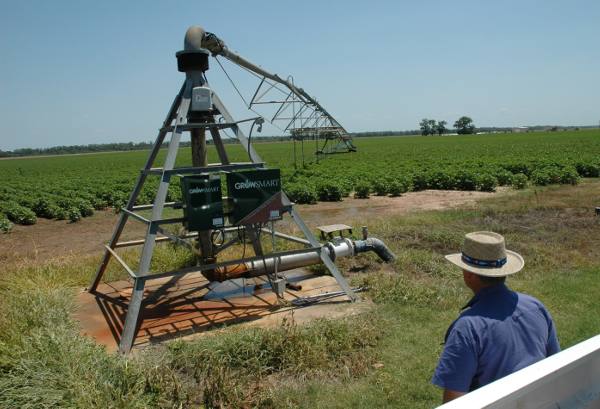May 30, 2012

Though the areas of extreme and severe drought shrank further, large parts of Texas remained either in one stage of drought or abnormally dry, according to the U.S. Drought Monitor and Texas AgriLife Extension Service reports.
Producers throughout the state continued to make hay, and plant cotton and other crops, according to weekly reports from AgriLife Extension county agents throughout the state. Cattle were generally in fair to good condition in most regions. Some livestock producers were restocking herds, but doing so at a cautious rate, concerned that the weather will turn dry again.
In the South Plains, where the majority of the Texas cotton crop is grown, the situation is certainly better than last year, said Mark Kelley, AgriLife Extension cotton specialist in Lubbock. Producers are actively planting throughout the region but aware they are still in a drought.
“We’re going at it like gangbusters,” Kelley said. “The northern part of the region — up around Parmer and Bailey counties — they are at the 90 to 95 percent mark, with some replanting going on, but they’re wrapping things up pretty quickly.”
Despite large swathes of the region rated as being in either a moderate or severe drought, there are areas where things look “really good,” he said.
“Lubbock County and south had some pretty good rains in May,” Kelley said. “Further south into Dawson County, they’ve had some good rains too. West of there it looks pretty good too in some spots, but we’re not out of the woods yet, by any means.”
Subsoil moisture levels remain the issue, he said, and timely rains will be needed throughout June to keep the crop growing.
“The good news in parts of the area could turn to bad in a hurry if the June forecast doesn’t shape up better, in my opinion,” he said.
But the current June forecast doesn’t look too promising. The area has already been passed over where the forecast has been for 20 percent to 30 percent chances for rain, Kelly said.
“I’m not giving up hope, and I’m sure the producers aren’t either,” Kelley said.
Hot, dry windy days are going to dry out dryland cotton very quickly. The irrigated stands are looking good, he said, but producers are unlikely to irrigate to the levels they did in 2011, and will likely divert water to other crops if the drought intensifies.
A moderately dry summer is a different story, he said. Growing dryland cotton could still be a dicey proposition, but irrigated farmers will continue to keep fields they’ve planted under irrigation.
More information on the current Texas drought and wildfire alerts can be found on the AgriLife Extension Agricultural Drought Task Force website at http://agrilife.tamu.edu/drought/.
You May Also Like




